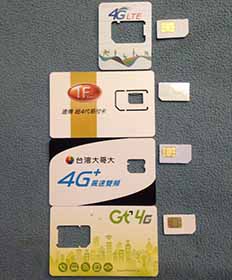搜尋結果
Wi-Fi ( / ˈwaɪfaɪ /) [1] [a] is a family of wireless network protocols based on the IEEE 802.11 family of standards, which are commonly used for local area networking of devices and Internet access, allowing nearby digital devices to exchange data by radio waves.
Wikipedia is a free content online encyclopedia written and maintained by a community of volunteers, known as Wikipedians, through open collaboration and the wiki software MediaWiki.Wikipedia is the largest and most-read reference work in history, and is consistently ranked among the ten most visited websites; as of April 2024, it was ranked fourth by Semrush, and seventh by Similarweb.
e. The Internet (or internet) [a] is the global system of interconnected computer networks that uses the Internet protocol suite (TCP/IP) [b] to communicate between networks and devices. It is a network of networks that consists of private, public, academic, business, and government networks of local to global scope, linked by a broad array of ...
In telecommunications, 5G is the fifth-generation technology standard for cellular networks, which cellular phone companies began deploying worldwide in 2019, and is the successor to 4G technology that provides connectivity to most current mobile phones.
In fluid dynamics, the speed of sound in a fluid medium (gas or liquid) is used as a relative measure for the speed of an object moving through the medium. The ratio of the speed of an object to the speed of sound (in the same medium) is called the object's Mach number.
- History
- Definitions
- Layer Architecture
- Cross-Layer Functions
- Programming Interfaces
- Comparison to Other Networking Suites
- Further Reading
- External Links
The development of the OSI model started in the late 1970s to support the emergence of the diverse computer networking methods that were competing for application in the large national networking efforts in the world (see OSI protocols and Protocol Wars). In the 1980s, the model became a working product of the Open Systems Interconnection group at ...
Communication protocols enable an entity in one host to interact with a corresponding entity at the same layer in another host. Service definitions, like the OSI model, abstractly describe the functionality provided to a layer N by a layer N−1, where Nis one of the seven layers of protocols operating in the local host. At each level N, two entities...
The recommendation X.200 describes seven layers, labelled 1 to 7. Layer 1 is the lowest layer in this model.
Cross-layer functions are services that are not tied to a given layer, but may affect more than one layer. Some orthogonal aspects, such as management and security, involve all of the layers (See ITU-T X.800 Recommendation). These services are aimed at improving the CIA triad—confidentiality, integrity, and availability—of the transmitted data.Cros...
Neither the OSI Reference Model, nor any OSI protocolspecifications, outline any programming interfaces, other than deliberately abstract service descriptions. Protocol specifications define a methodology for communication between peers, but the software interfaces are implementation-specific. For example, the Network Driver Interface Specification...
The table below presents a list of OSI layers, the original OSI protocols, and some approximatemodern matches. This correspondence is rough: the OSI model contains idiosyncrasies not found in later systems such as the IP stack in modern Internet.
John Day, "Patterns in Network Architecture: A Return to Fundamentals" (Prentice Hall 2007, ISBN 978-0-13-225242-3)David M. Piscitello, A. Lyman Chapin, Open Systems Networking(Addison-Wesley, Reading, 1993)Andrew S. Tanenbaum, Computer Networks, 4th Edition, (Prentice-Hall, 2002) ISBN 0-13-066102-3ISO/IEC standard 7498-1:1994 (PDF document inside ZIP archive) (requires HTTP cookiesin order to accept licence agreement)"INFormation CHanGe Architectures and Flow Charts powered by Google App Engine". infchg.appspot.com. The ISO OSI Reference Model, Beluga graph of data units and groups of layers. Archived from the...A computer network is a set of computers sharing resources located on or provided by network nodes.Computers use common communication protocols over digital interconnections to communicate with each other. These interconnections are made up of telecommunication network technologies based on physically wired, optical, and wireless radio-frequency methods that may be arranged in a variety of ...





